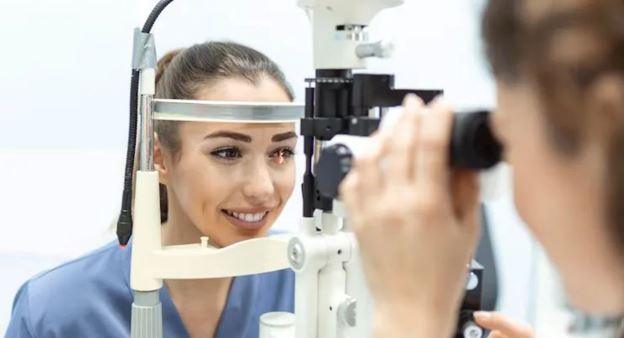Taking Advanced Eye Exams Near You – When Should You Get Alert?
Maintaining the good health of your eyes and your vision is an undeniable need in today’s times. Although most may believe they likely do not need a comprehensive eye exam yet, it’s still possible that they may suffer from certain other vision problems.
For example, you would probably suffer from headaches, dry eyes, or red eyes if you work in front of screens frequently. While it’s not a severe form of vision impairment, turning a blind eye to these symptoms can be bad.
All three mentioned symptoms are known causes of accelerating macular degeneration and cataracts. So, this post will instruct you about specific advanced eye exams that you should take to become alert about your eye care and vision health.
What is an Advanced Eye Exam?
An advanced eye exam generally focuses on testing specific areas of the eye or vision instruments for any impairments or serious eye conditions.
There are nine different types of eye exams that a trained optometrist can conduct, in addition to the advanced eye exams. While you can take comprehensive eye exams Toronto at an eye care center near you, here’s why you should at least once a year get an advanced eye exam.
Patients at Risk of Eye Conditions
- Wearing contact lenses.
- Taking prescription or OTC drugs with ocular side effects.
- Refractive error in one or both eyes.
- Previous eye injury history or eye surgery.
- Other eye-related conditions or concerns.
- Occupations with highly demanding jobs that pose a hazard to the eyes.
- Family history of ocular disease.
- Health conditions with ocular symptoms.
The mentioned types of patients are at risk of developing critical eye conditions at any stage. An advanced eye exam test is, therefore, the only means to learn better and stay informed about your vision health.
Types of Advanced Eye Exam Tests
- Glaucoma Test
It serves to test the intraocular pressure of the patient. Those with higher pressure may need advanced glaucoma screening tests.
A glaucoma test will use a probe to flatten the cornea gently. The pressure required to flatten the cornea will determine the eye pressure. Using a slit lamp, the optometrist may look into the eye if not perform electronic tonometry.
In an electronic tonometry procedure, a rounded pen-like tool is placed on the cornea to electrically display the pressure.
- Retinal Tomography
The optic nerve and retina will be checked in this advanced eye exam test using a specialized laser. All of the 3D images taken with the help of the laser will be combined to form a 3D diagram of the optic nerve, helping doctors identify damage from conditions like glaucoma and others.
- Fluorescein Angiography
Patients who may be at risk of diabetic retinopathy or macular degeneration are usually recommended for this test. It will consist of injecting a fluorescent dye into the system through an injection.
Such a process will enable the doctor to track blood movement in the retina with live pictures. It will also contribute to taking pictures of blood vessels in the retina to check for issues needing treatment sooner or later.
- Optical Coherence Tomography (OCT)
The OCT test uses light waves to take pictures of your retina layers. It enables doctors to map the images to determine retina thickness and damage.
A patient may also need to take dilating eye drops during the exam, which will scan the eye for about 10 minutes. As a result, patients can rely on this eye exam test to factually state multiple types of diagnosis.
Everything from macular degeneration, glaucoma, diabetic eye issues, abnormal blood vessels, and optic nerve damage can be detected through this eye exam.
- Fundus Photography
Known commonly as the Fundus test, it is another type of retinal imaging examination that will take photos of the interior of the eyes. It serves to detect eye conditions like glaucoma, diabetic retinopathy, macular degeneration, and other forms of preventable blindness. The entire procedure only takes minutes without being invasive.
- Ultrasound
The ultrasound eye test exam comes in two types – A-scan and B-can.
In the A-scan, the patient will have a probe positioned in front of their eye or a fluid-filled cup placed on the eyes. It is also useful when preparing the patient for cataract surgery.
The B-scan will see the patient accepting the application of a thin gel on the eyes for the probe to next be used on the eyeballs. It will serve to look at the back of the eyes, looking for tumors or other conditions.
When Should You Get An Advanced Eye Exam Test?
Typically, an advanced eye exam test should be scheduled before specific symptoms or risk factors appear. Potential eye health concerns are best identified by professional eye doctors who can also catch common vision issues.
Most vision screening programs and tests at schools do help with the detection of a handful of eye problems. Still, such tests can miss out on critical vision conditions. So it’s highly recommended to participate in an advanced eye exam as soon as possible if you haven’t in many years.
Additionally, an advanced eye exam can also possibly diagnose early signs of the following health conditions:
- Aneurysms
- Diabetes
- Heart disease
- High blood pressure
- High cholesterol
- Lyme disease
- Multiple sclerosis
- Stroke
- Brain tumors
Signs You Need an Advanced Eye Exam
A few signs to help you understand that you might be suffering from underlying eye problems include the following:
- Frequent headaches
- Persistent eye strain
- Seeing floaters occasionally
- Blurred vision
- And others
When you experience any of these vision issues, it could indicate there may be retinal damage or early onset of severe conditions like glaucoma or macular degeneration. Since ignoring these symptoms can accelerate vision degeneration, it’s best to visit an eye care center near you.
Final Words
The routine eye test period for adults is at least once annually, while for children and younger ones, it is twice annually. As a resident, student, or working professional, it’s invaluable to protect your eyes.



